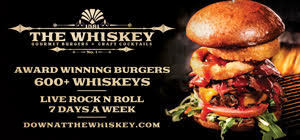It’s been a long time since we’ve had a comprehensive look at Victoria & Albert’s, Disney’s top-of-the-line restaurant at the luxurious Grand Floridian Resort & Spa. The restaurant, which last year snagged top ratings from AAA and Mobil Travel Guide, recently underwent some changes, but most are subtle.
Wedgewood has replaced Royal Doulton as the house china, Sambonet flatware has been replaced with Cristofal. The Schott-Zweisel crystal has been supplanted by Reidel, the choice of wine snobs everywhere.
There are changes to the intimate dining space as well. The walls have been repadded with coverings that fit the turn-of-the-previous-century theme. The eight thick, squat columns that ring the center rotunda have been replaced. But the room is still the elegant space it was when it opened in 1988, sumptuously appointed, romantic and quiet.
The servers still wear costumes of circa 1900 servants, but their Disney name tags no longer misidentify them as a Victoria or an Albert, one of the bits of silliness that did disservice to an otherwise high-class dining experience; the staff may now use their own names.
Scott Hunnel still oversees the kitchen, as he has done most ably for the past 11 years. Dinner is, as it was, prix fixe. Ninety-five dollars is the going rate these days. For another $50 you can pair each course with a wine chosen to complement the food. Add the tip, plus a premium for an upgraded item (more on that in a moment) and you’re looking at over 200 bucks for one person. In terms of the quality, the unique offerings, the pampering and the enjoyment of an experience that will last nearly two-and-a-half hours, it’s a bargain.
Dinner is presented in six courses from a personalized menu with options in each category. The menu my guests and I enjoyed will surely have changed significantly by the time you read this – Hunnel makes changes periodically – but the gist will remain.
The first course, which followed an amuse bouche of a seared scallop with mango, featured a terrine of Dungeness and lump crab with three types of asparagus carefully arranged on the plate. Or, Applewood smoked buffalo as part of a stylized Waldorf salad, graced withapple walnut vinaigrette. This course presented the first upgrade option of Iranian caviar that, had anyone at my table selected it, would have added $70 or $140 to the bill depending on the size of fish eggs. We were all happy with the other selections, especially the crab.
In the next course, pan-roasted foie gras was worth the $15 premium. The buttery-textured lobe was served atop a brioche scented with vanilla and accompanied by cherries. The other choices were good too: pork tenderloin with Maui spring onions as part of a creamy sauce soubise, and Gulf of Mexico shrimp with coconut curry broth and bok choy. On another visit I had a “Napoleon” devised of veal from Marcho Farms layered with melted leeks and roasted baby fennel.
The fish course had Maine skate wing, firm, white and sweet, served with artichoke confit and preserved lemon to add a touch of tart. Monterey abalone was the premium selection ($25), dollar-sized coins of of the mollusks sauteed with baby spinach, toasted capers and accented with Meyer lemon. On one visit they were done perfectly; on the other they were tough and hard and the only disappointment I experienced.
My first choice for the seafood course was the Scottish smoked salmon cream with barely seared Copper River salmon, which was more of a soup course. But it was wonderful, the richness of the cream playing off the smoky notes of the salmon. And in a truly inspired pairing, instead of wine it was served with a Belgian ale.
For the putative main course the selections included guinea hen with mushroom risotto, morels and truffle foam; Jamison Farm lamb with Laura Chenel goat cheese gnocchi and ratatouille. The meat featured sliced medallions as well as a slender chop. The gnocchi were seasoned simply with kosher salt, which enhanced the myriad flavors within.
Grilled prime filet with celery root-potato puree, braised short ribs and oxtail jus is for the meat and potatoes types. For those types with a little extra money, the Austrailian “Kobe” beef premium ($25) is identical except for the meat.
Instead of a classic cheese course, Hunnel offers a cheesecake fashioned with English Stilton served with a cheesestick of Parmigiano-Reggiano.
Desserts showcase the genius of pastry chef Erich Herbitschek. A Grand Marnier souffle was superb, but another presentation of chocolate and spun sugar presented a tableau of a salute to Disney’s new Soarin’ exhibit. Very impressive.
The dining room is under the watchful eye of Israel Perez. The erstwhile Vicky and Al’s comport themselves professionally, and service is painstakingly proper. I do wish they’d dispense with the line-by-line reading of the menu.
Much more annoying, however, is the grilling that takes place when making a phone reservation. It is a long ordeal during which you will be asked personal questions that shouldn’t matter when making a dinner reservation. There’s no need for that.
But with that experience in the past, dinner at Victoria & Albert’s, the only restaurant in Central Florida that still requires gentlemen to wear jackets, is truly top-notch. It’s a magnificent dining experience that is worthy of the accolades it has received.









